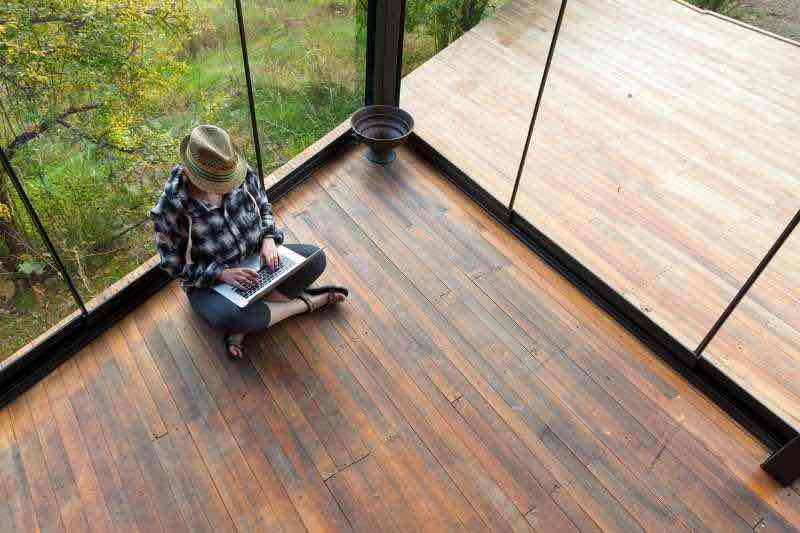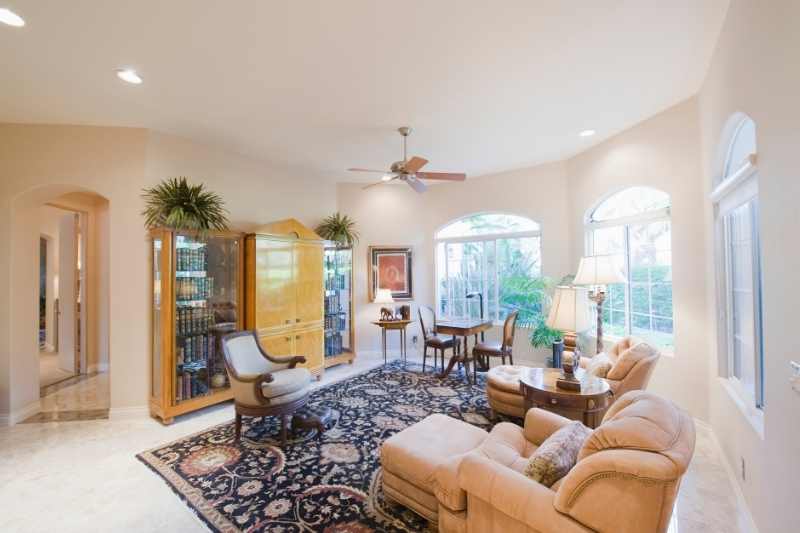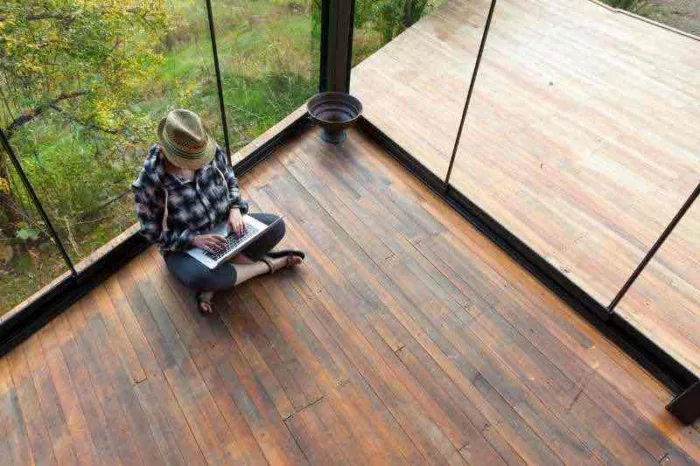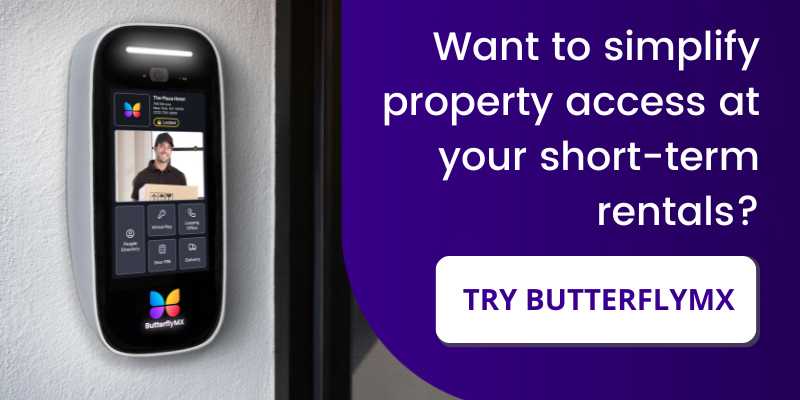
The 2020s have disrupted the real estate market in many ways. But one trend on the rise is short-term rentals and flexible leasing.
For most Americans, working from home is the new normal, and they don’t need to live near their offices anymore. At the same time, others are rethinking their relationship with work and finding a new purpose in life. In both cases, people are packing up their bags and relocating to new places.
However, what’s different about this mass relocation is that people prioritize flexibility and mobility over stability and consistency. As a property owner or manager, you’ve probably seen increased demand for flexible leasing options and agreements. Read on to discover the world of flexible leasing, its benefits to residents and multifamily properties, and tips on enabling it.
In this article, we explore:
- What is flexible leasing?
- Flexible leasing as a solution to work/life balance
- How flexible leasing affects multifamily properties
- Tips for accommodating this future of living
What is flexible leasing?
Flexible leasing allows residents to live in a space for less than the traditional full-year lease. And the duration of the agreement is mutually decided by both the landlord (or property manager) and the tenant. Sometimes, the flexible lease is adjusted on a month-to-month basis.
Also known as short-term rentals, flexible leasing caters to residents who prioritize traveling and adaptability. In short, these listings offer the flexibility of a hotel and the amenities of a fully furnished apartment. Online platforms like Landing, Sonder, and Sentral allow landlords and property managers to list their apartment units for residents looking for flexible living arrangements.
The rise of flexible living
The mass shift to remote work spurred the increased demand for flexible housing accommodations.
In a recent study, Prudential found that out of all the Americans working remotely during the pandemic, 87% hope to continue working from home at least one day a week once the pandemic subsides. Meanwhile, others have entirely uprooted their lives, ditched their leases, and hit the road permanently.
For many Americans, this indefinite shift to working from home made them adopt the extended travel trend. They no longer want to be tied down to a one- or two-year lease. As long as there’s an internet connection, they can literally work from anywhere while seeing more of the country — and even the world.
Influence of The Great Resignation
While many remote workers tried to strike a work/life balance in this remote environment, some quit their jobs altogether amid the pandemic.
While many were forced to leave their jobs because of lack of childcare and health-related concerns, others quit in search of finding new meaning in life. During such unprecedented times, employees simply reached a breaking point after months and months of higher workloads, hiring freezes, and not to mention pandemic-induced anxiety.

Economics and policymakers have coined the term ‘The Great Resignation’ to describe the tidal wave of resignations in 2021. At the time of writing, November 2021 oversaw the greatest number of resignations recorded — 4.5 million Americans voluntarily quit their jobs during that month.
Although some left their jobs for better opportunities at other companies, many are using this newfound freedom to travel, spend more time with family, and discover new passions. And for many, this means adapting to a flexible lifestyle that offers more time to travel and less time being stuck in one place.
Flexible leasing as a solution to work/life balance
In short, the pandemic has taken us 20 years into the future in just two or so years. The mass shift to remote work has become the new norm. And traveling isn’t just a leisure activity anymore; it’s become a sustainable lifestyle for some.
For Americans across the country, flexible leasing grants them access to the work/life balance they’ve been yearning for a long time. As such, they have more freedom to adopt work around their lives instead of the other way around.
Flexible leasing makes this balance easier to achieve by offering:
Nomadic lifestyle
Some remote workers have taken advantage of their location-independent jobs by relocating to wherever they choose. These people are known as digital nomads. Digital nomads are a subset of remote workers who not only find more affordable places to live but also constantly relocate. Their main objective is to see and experience as many different places as they can while working remotely.
Meanwhile, a handful of workers are taking a break from working and embracing the nomadic lifestyle head-on. For example, some folks have taken sabbaticals from their jobs and embarked on long road trips, settling in short-term rentals between destinations.
More freedom with fewer responsibilities
Another incentive of flexible leasing is the more freedom it offers through fewer responsibilities.
Although traditional renting offers more flexibility than owning a home, residents still need to pay rent, look after their belongings, and be committed to the place for at least a year. However, residents have more freedom with flexible renting.
For example, most flexible renters either sell their furniture and non-essential items or put them into storage. They only pack the bare essentials for extended travels. In other words, they also embrace minimalist lifestyles in hopes of being untethered to a particular place or responsibilities.

Mental wellbeing
As the stigma against mental health issues continues to dissipate, more Americans prioritize their mental wellbeing above their careers and social status. And flexible leasing offers a huge helping hand in residents’ mental wellness journeys.
For one, it offers a hassle-free way for them to explore themselves and their interests through traveling and flexible living arrangements. Not worrying about long-term living arrangements enables travelers to focus on themselves and prioritize other things in life.
Multiple studies have stressed the importance of being in nature and fresh air, which positively impacts a person’s mental well-being. And flexible leases offer residents more opportunities to be outside — they can move according to a location’s weather and access to open, fresh air.
Watch how to offer self-guided tours for residents looking for flexible leases:
How flexible leasing affects multifamily properties
Although certain states and municipalities have strict laws against flexible leasing, other locations accommodate such lease structures. However, the surge in demand for short-term rentals has significant implications for multifamily properties at large. What started as a trend is now shaping the future of multifamily housing.
Residents want furnished short-term rentals
Unlike long-term rentals where you lease units unfurnished, most flexible rentals come entirely furnished. To outpace the competition from short-term rental booking companies, you should furnish your flexible lease units.
As mentioned above, extended travelers and digital nomads don’t travel with furniture. They tend to travel as lightly as they can. So, to attract short-term renters, offer furnished units. Most of the time, unfurnished units are the biggest factor that deters prospective renters away from your short-term rentals.
Coworking spaces are a popular amenity
In some areas, the demand for coworking spaces exceeds the demand for traditionally popular amenities like fitness centers. Just as most hotels have designated business centers where guests can do work, short-term renters — and even long-term residents — are looking for similar accommodations.
So, transform a lounge or unused leasing office into a coworking space. You can do this by adding a handful of desks and chairs to the area and creating “reading nooks” in room corners. And the most important thing is to install a high-speed, community-wide WiFi router in the coworking space.
Higher turnover rates but increased occupancy
Short-term rentals inevitably have higher turnover rates since most residents stay for shorter periods. But by marketing and setting up flexible leasing units correctly — with furniture and desirable amenities — you can significantly increase the occupancy rate.
For the most part, short-term rental move-ins and move-outs are effortless because renters usually have only a suitcase or two of belongings. And your staff can easily clean the unit and prepare it for the next resident.
Tips for offering flexible leasing
There are several tips and tricks you should keep in mind when offering flexible leasing options. Flexible renters need specific accommodations and amenities that may be unique to them. But in the long-run, certain additions and investments may also benefit your long-term residents as well.
And who knows: Perhaps short-term renters will fall in love with your property so much that they turn into long-term residents.

Here are 4 tips for offering flexible leasing:
- Invest in a robust access control system. Handing over and cycling multiple keys to every short-term renter can create a severe security hazard. Instead, invest in a powerful smartphone-based access control system that works throughout the building. That way, you don’t need to issue physical access credentials — you just digitally assign and revoke access permissions as residents move in and out. And residents can simply use their smartphones to unlock doors.
- Automate leasing procedures. With higher turnover rates, coordinating multiple lease agreements and procedures for short-term rentals can quickly become a nightmare. So, choose an effective CRM platform to manage your flexible leases and automate tedious paperwork and processes.
- Partner with on-demand cleaning services. Your property staff might not have enough bandwidth to clean units after every short-term resident moves out. So, outsource the work by partnering with an on-demand apartment cleaning service. This way, your staff won’t burn out, and you can rest assured that the units are cleaned for the next resident.
- Streamline package deliveries. Long-term travelers also want their essentials delivered to wherever they’re staying. Prevent havoc in your lobby by creating a package room. This way, couriers can securely place deliveries in the room and have the package management software automatically notify residents to retrieve them.
Takeaways
The demand for flexible leasings will likely stay long after the pandemic. As a property manager or owner, you should respond swiftly to the evolving trends of the rental market.
In summary, you should offer flexible leasing options in your multifamily property because:
- As people continue to work from home permanently, they’ll want to change their lifestyles, including where they live and for how long.
- Extended traveling is becoming the norm for digital nomads and ex-workers alike.
- Short-term rentals offer residents the flexibility and freedom to achieve a better work/life balance.
- You’ll stay ahead of the competition by offering flexible leasing units that are fully furnished, equipped for remote work, and full of desirable amenities and features.
- The best way to get started is to invest in proptech solutions such as access control systems, automation software, and package rooms.






